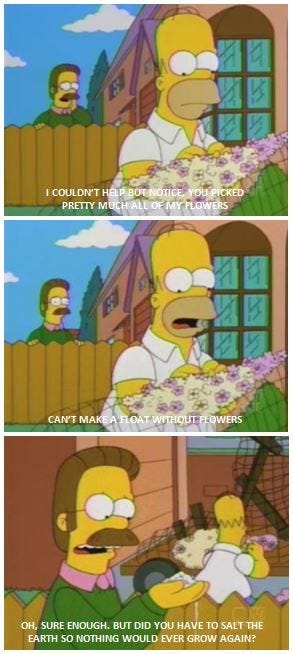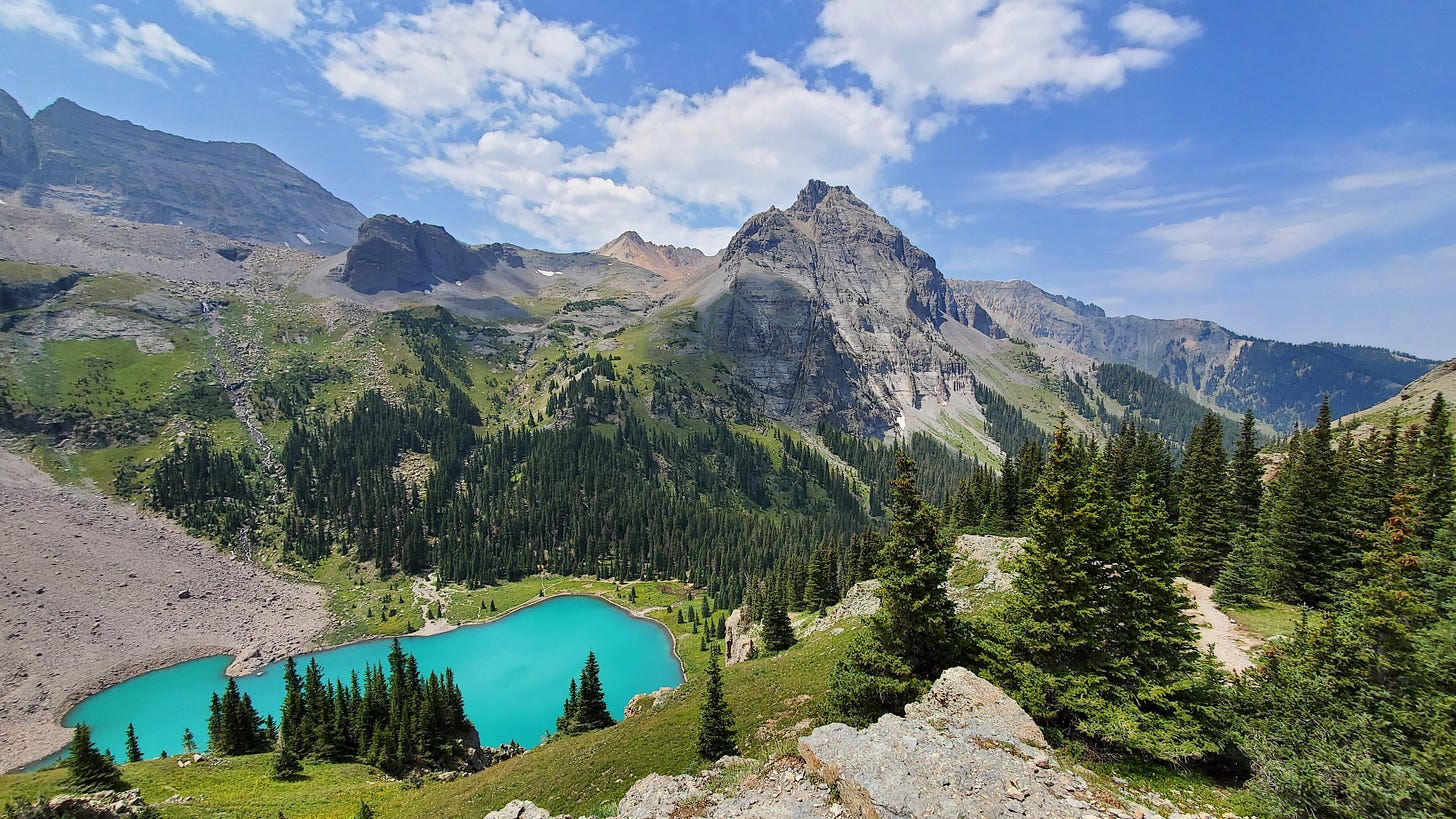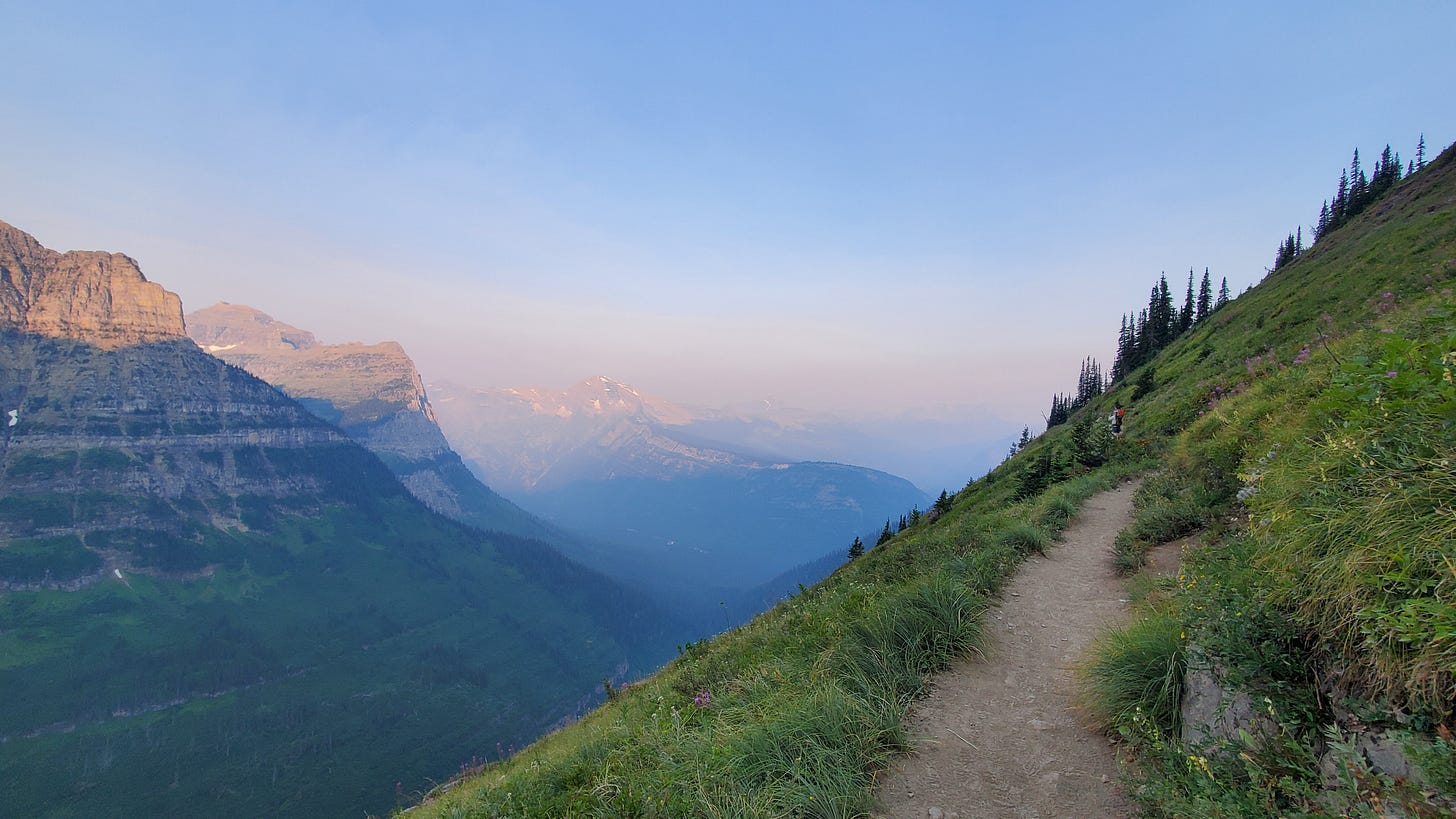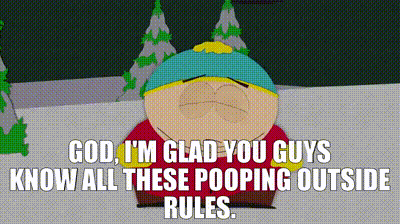Why Leave No Trace actually matters: Not cutting hikes, keeping on trail, not picking flowers
Explaining why this matters without being a scold.
When I was younger, I never really understood the wisdom about not picking flowers or taking rocks home as keepsakes. There are a lot of them, right? Over the years, I learned that it actually matters a lot. I hope this piece can convince other nature lovers to try to minimize their impact while hiking.
Taking stuff
At the top of one of Colorado’s Fourteeners (mountains that are at least 14,000 ft tall), I saw a woman grabbing some sandy dirt to put into a small keepsake jar. As is the case for many mountains—the peak really isn’t all that big. If everyone who summited were to do the same, it could actually measurably shrink the peak.
Taking one rock from a beach or flowers from public grounds might not seem as concerning, but it’s still not good for the land or future visitors. Always consider what would happen if everyone did the same—it could leave these places barren.
Taking stuff can also harm the ecosystem. When I was hiking in Mount Hood National Forest in Oregon, a couple pointed out a shed antler left behind by a large animal. It was amazing to see! They picked it up and took it home. Not only is doing so illegal in most cases, but it’s harmful for the environment. As the U.S. Fish and Wildlife Service notes:
“Rodents in particular love shed antlers - mice, squirrels and porcupines will gnaw on antlers for their nutrients and to wear down their ever growing teeth. Even bears, foxes, opossums and otters have been known to eat antlers. Because antler sheds are important for healthy habitat, antler shed hunting is illegal in many places.”
As they note, it’s also illegal to remove things like rocks from national parks.
Antlers, rocks, plants, and anything else you might find could be important to the local ecosystem. It depends on the specific area which pieces are most important, but that’s why best practice is to leave things as they are.
Cutting switchbacks or stepping on plants
These actions in particular can severely harm both the plants and trails. Cutting switchbacks (zig-zag trails) can cause severe erosion, which can force park and forest services to close trails until they are able to repair the trails. The zig-zags often exist in order to make trails more gradual and reduce the possibility of erosion in the first place while also making trails less straining on hikers. If you’ve ever been on a trail on the side of a hill and seen a piece caved inward, that is erosion happening. Sometimes it will just happen, but staying on trail and not cutting switchbacks helps prevent erosion.
And stepping on plants can kill them for good. We all get off trail sometimes, but when that happens, it’s best to step on rocks rather than plants.
Picking harmful camping sites for the Insta
When you’re choosing a place to camp, it’s best to use established or existing tent spots. You will notice that these spaces are already barren and without growth, which is why you notice them. If you clear a new spot for your tent, you’ll create more of these spots unnecessarily and prevent growth.
You’ll also want to camp away from water—at least 100 feet. This helps keep water sources clean and ensures you don’t harm fragile plants near shores. Furthermore, if you get up in the middle of the night to use the tree or hole (we’ll get to that later), you probably won’t feel up to walking significantly far enough from water to avoid contaminating it. And studies in certain area show the resulting harm. Hikers and campers in the San Juan range of Colorado—one of my favorites—have been severely contaminating downstream water.
Tossing around garbage and food scraps
There are four big reasons to avoid this: garbage of any kind can attract bears, animals may feed on garbage and become sick or dependent, if you don’t clean it up then someone else will have to, and not everything will biodegrade—especially at altitude.
Garbage of any kind can attract bears
A few years ago, I was hiking on the Highline Trail in Glacier National Park. It’s a stunning trail with lots of wildlife, including grizzly bears. That’s why I was particularly horrified to see a woman eating an orange and tossing the peels to the side of the trail. A year earlier, a grizzly had begun walking towards me from about 40 ft away. This happened maybe a few miles from where we were located then. Her actions could put others in danger not just in the near-term, but long-term too. Teaching bears that humans = food is extremely dangerous.
Animals may feed on garbage and become sick or dependent
Even something as simple as feeding squirrels peanuts can make them sick. Peanuts contain a fungus that’s dangerous for them. You don’t know these animals’ diets and our high-fat and high-sugar food can hurt them. It can also make them dependent on humans or associate us with food, which can make them dependent.
If you don’t clean it up then someone else will have to
I’ve seen videos from National Park rangers on Instagram finding toilet paper and having to collect it to throw it out somewhere appropriate. That’s really unfair to them. I’ve also seen videos where they find garbage, tents, and full abandoned campsites.
For that matter, hikers in the Northeast may be used to the idea that poops will biodegrade. But at altitude, that’s not always the case.
REI has a really good guide to going in the woods. There are many considerations—mountain goats are attracted to urine, so going on dirt can cause them to dig and erode. It’s better to go on rocks. And number twos require a different set of considerations. Mount Everest actually has a severe poop problem. So all in all, it’s better to pack it out. Going in a bag isn’t necessarily my favorite thing, but I’m glad to keep the hike more sanitary and pleasant for others.






